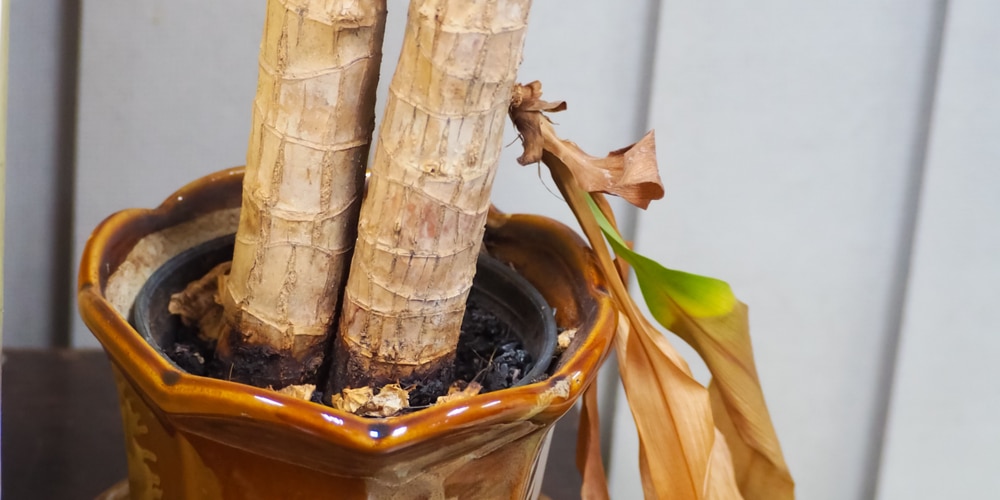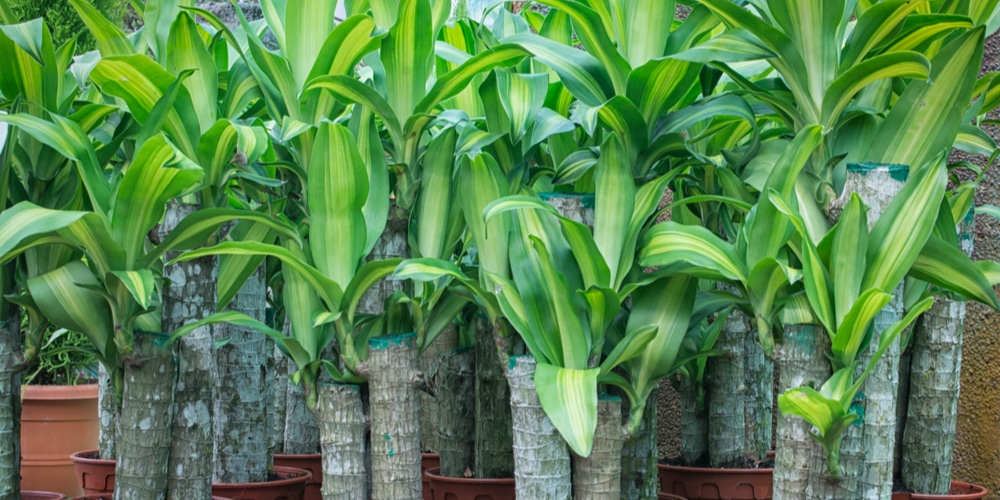There is no actual cure for a dying corn plant. Yet if you provide all of its needs and fix any possible problems that develop, then it might just come back to life. To stand a chance of saving your corn plant, you’ll need to correctly diagnose the problem and then ensure that your corn plant’s needs are being met.
This article will discuss some of the possible reasons your corn plant is dying and tell you what to do to save your plant.

How to Save a Dying Corn Plant?
Dracaena fragrans go by many names; one of them is the corn plant. They are also commonly referred to as Chinese money trees, cornstalk Dracaena, false palms, and happy plants. If you have a corn plant that’s looking a bit under the weather, the following tips may help you bring it back to health.
Diagnose what’s causing the problem
First, you need to determine what is causing your corn plant’s decline in health. Is it overwatering, underwatering, insect infestation, incorrect lighting, or poor soil nutrients?
Soil Conditions
The first step is to check the soil. If you push your finger into the ground, you can check the moisture levels. The earth should feel damp but not waterlogged. You can also invest in a soil test kit from your local garden center; this will allow you to check the soil’s pH range and test for nutrient deficiencies in the soil.
Insect Infestation
Next, check whether or not your corn plant is infested with insects such as scale and mites. There are pesticides available that you can use to destroy the insects and save your plant.
Overwatering
If overwatering is causing wilting in your corn plant, then it’s time to take action. The best way to save your corn plant is to take it out of its pot and check the roots. If you see any black soggy roots, this is an indication you’re your plants suffering from root rot. You can cut back the roots until they look healthy again. A healthy root has white in the middle and feels firm. Then treat the plant’s root with a fungicide to kill the infection. Place the roots on some newspaper and leave them for a couple of days to dry off, then repot into fresh soil. Don’t reuse the soil as your plant will get reinfected, or the fungal infection will be spread to other plants.
The best way to avoid root rot is by using a well-draining potting mix and watering from the top. Just make sure not to leave your corn plant’s container sitting in a pool of water, as this will cause the roots to rot.
Underwatering
Underwatering could also be the problem, which is something you can easily rectify by adding more water to your plant’s container. Water until the soil is moist but not wet, then test it again after a few days. You can also water from the top, but make sure you use room temperature water and not cold water, which could shock your corn plant.
How to Save a Dying Corn Plant?: Lighting Problems
Then there’s incorrect lighting, which is a common problem with indoor plants. If they aren’t getting enough light, they will start to wilt as they need photosynthesis to live. In this case, you will need to move your plant into a sunnier location.
Dracaena fragrans tolerates moderate light levels, but it thrives best in bright indirect sunlight. Keep your corn plant out of direct sunlight as this could scald its leaves and lead to sunburn. They also won’t put up with any really cold temperatures either, so make sure your corn plant is kept in a warm location.
Cut off dead foliage
Once you’ve fixed any possible problem with your soil, water, lighting, or insect infestation, then the next step is to cut off all dead or dying foliage. When a corn plant is over or underwatered, its leaves will turn yellow or brown. You can cut damaged leaves off with sterilized scissors to make it look a lot neater and encourage new growth.
How to Save a Dying Corn Plant?: Conclusion
Most of the problems associated with Dracaena fragrans are caused by the incorrect physical conditions for its growth. Remember that this plant needs lots of light, warmth, and good air circulation to thrive. Good luck trying to save your corn plant!
